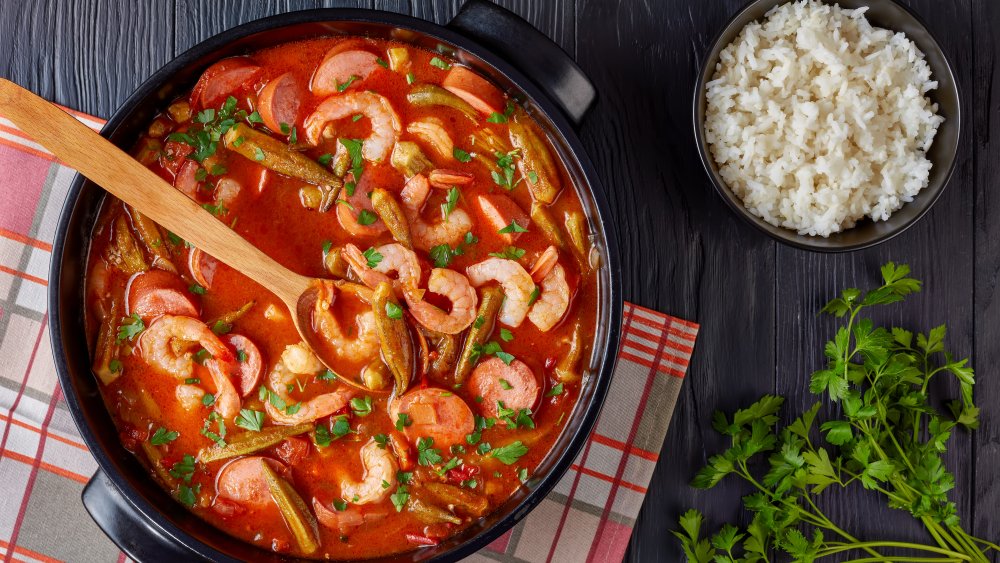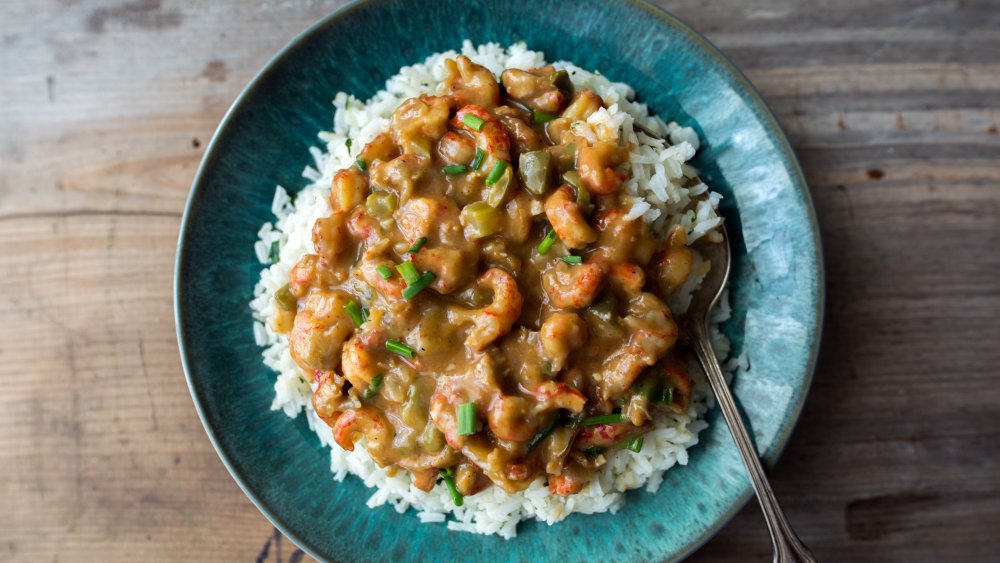The Real Difference Between Gumbo And Etouffee
True Southerners no doubt know the difference between gumbo and etouffee like the backs of their hands, but for anyone who didn't grow up seeing both dishes on the dinner table, they can almost seem the same at first. While gumbo and etouffee have some similarities and common ingredients like onions, celery, bell peppers, and a roux, each dish has its own unique flavor and characteristics (via Our Everyday Life).
According to MyRecipes, gumbo is a thick soup, almost like a stew, usually made with meat, veggies (specifically bell pepper, onions, and celery), roux, and okra or filè powder (dried and crushed Sassafras leaves used to thicken and flavor the dish). Either okra or filè powder can be used as a thickener, but most gumbo recipes usually include at least some okra. According to Southern Living, the word "gumbo" even comes from a West African word for okra.
Additionally, gumbo is almost always served with rice, but the rice is always cooked separately, never added to the pot as the gumbo's cooking. Depending on who's doing the cooking, a bowl of gumbo can be as thick as a stew, or a little closer to a broth in texture. Gumbo's exact origins aren't exactly clear, which is part of why the dish can vary so much, but according to My Recipes, it likely has roots in Choctaw Native American, West African, and French cuisines.
What is etouffee, and how is it different?
At first glance, etouffee looks quite a bit like gumbo; it also has the appearance of a thick stew, usually served alongside rice (via Tastessence). However, unlike gumbo, which can have a mixture of different meats and seafood, etouffee usually highlights a star ingredient, typically a type of seafood like shrimp or crawfish. And while gumbo is a soup or stew, etouffee is more of a main dish; the word "etouffee" means "smother" in French, which refers to how the seafood is "smothered" in a thick, usually tomato-based sauce.
Like gumbo, etouffee is also usually made with a roux and has its roots in Cajun and Creole cuisine (via Chowhound). However, while gumbo usually uses a dark brown roux created through slow cooking, etouffee typically starts with a lighter-colored roux made with butter. No matter which one you reach for first, just make sure you have some rice ready to soak up the extra sauce and broth!

